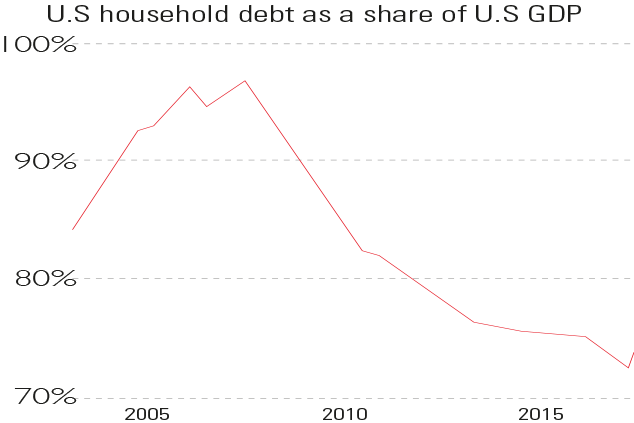
American households were traumatised by the Great Recession, which was the worst for 70 years, says Fortune’s Geoff Colvin. They finally stopped shopping and paid some debt back after decades of borrowing and spending.
The absolute level of consumer debt fell from the 2008 peak of $12.3trn and has ticked up gently since around 2013 to a new high of almost $14trn. But the days of “debt-crazed” shopping are over. In terms of GDP, debt has kept sliding from a pre-crisis 99% to around 76% as overall growth has eclipsed the pace of household borrowing increases. And households now save a “prudent” 8.1% of their income. The personal savings rate plummeted to zero in 2006 and 2007.
Viewpoint
“The so-called ‘cashless society’ is just a Trojan horse for a system in which all financial wealth is electronic and represented digitally in the records of a small number of megabanks and asset managers. Once that is achieved, it will be easy for state power to seize and freeze the wealth, or subject it to constant surveillance, taxation and other forms of digital confiscation… The war on cash has two main thrusts. The first is to make it difficult to obtain cash in the first place. US banks will report anyone taking more than $3,000 in cash as engaging in a ‘suspicious activity’ using Treasury form SAR (Suspicious Activity Report). The second thrust is to eliminate large banknotes. The US got rid of its $500 note in 1969, and the $100 note has lost 85% of its purchasing power since then. The European Central Bank has already discontinued the production of new €500 notes.”
Jim Rickard, Hard Assets Alliance